Cities
Filters
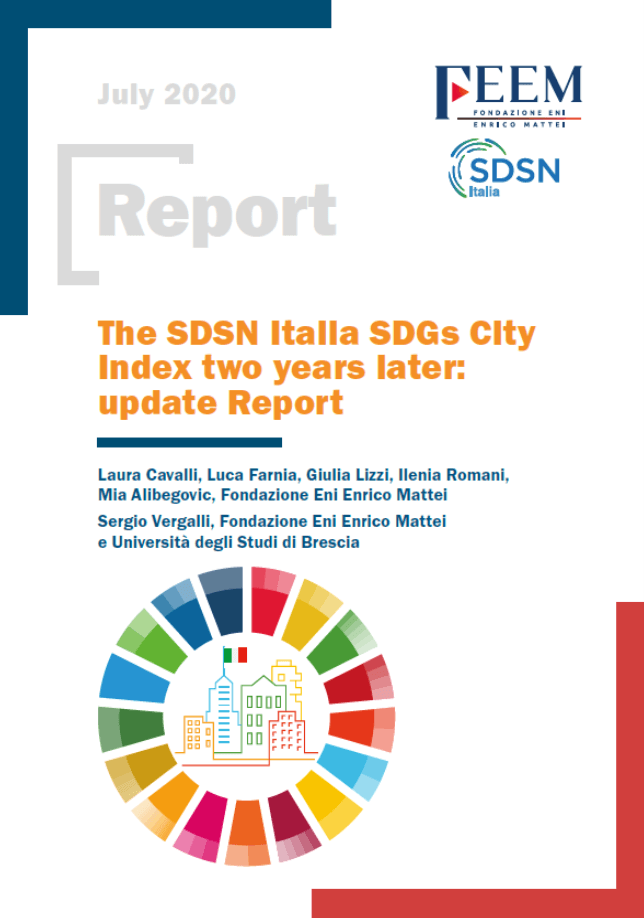
By jay
•
15 Jul, 2020
Two years after the publication of the first SDGs City Index in Italy, SDSN Italia and Fondazione Eni Enrico Mattei have released new data, updated to 2020. The new Report provides not only a screenshot of Italian cities’ distance to the targets of the 2030 Agenda, but also a comparison, where possible, among performances over a two-year timeframe.
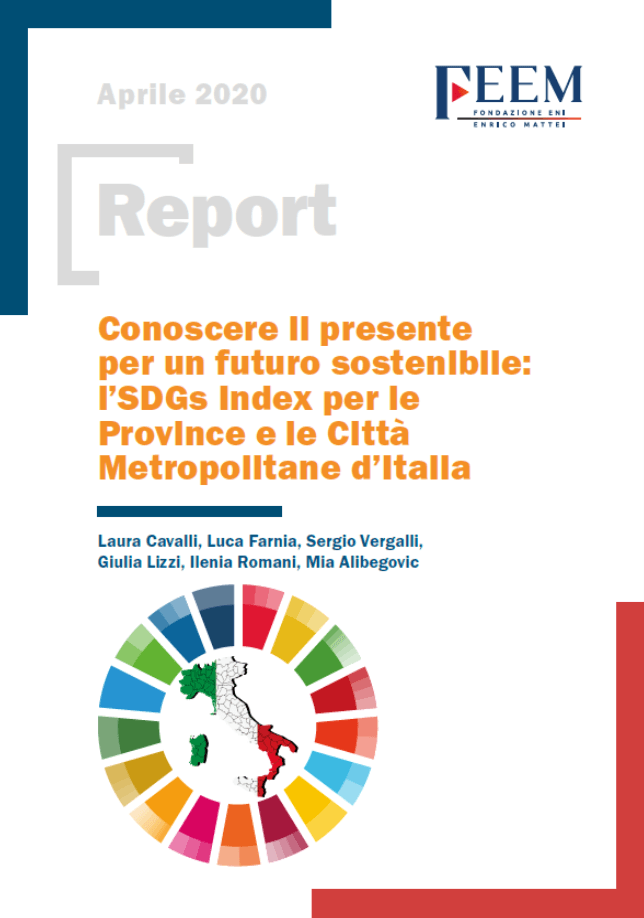
By jay
•
30 Apr, 2020
Compresa e considerata l’importanza che gli enti territoriali svolgono all’interno del processo di attuazione dell’Agenda 2030 per lo Sviluppo Sostenibile e di implementazione dei suoi 17 Obiettivi di Sviluppo Sostenibile, la creazione di strumenti utili agli amministratori locali e alla cittadinanza risulta indispensabile per raggiungere un tale risultato e, con esso, un cambio totale del paradigma vigente. Per questo, la Fondazione Eni Enrico Mattei, instituzione ospitando SDSN Italia, dopo aver analizzato il grado di sostenibilità dei comuni-capoluogo di provincia italiani e aver proposto una comparazione interregionale rispetto ai Goal dell’Agenda, presenta ora uno strumento utile a Province e Città Metropolitane del nostro Paese. Per rispondere alla necessità di tutti gli enti locali citati sono stati forniti loro strumenti teorici e quantitativi atti a trainare il percorso verso il raggiungimento di uno sviluppo sostenibile dal punto di vista economico, sociale e ambientale. L’elaborazione dei suddetti tools metodologici è pertanto utile a cogliere le sfaccettature e opportunità dell’Agenda 2030 e della Strategia Nazionale per lo Sviluppo Sostenibile (SNSvS). Si ricorda, infatti, che l’Agenda 2030, nella sua declinazione nazionale e locale, costituisce un’opportunità e un quadro di riferimento per allineare le politiche territoriali con le agende internazionali di sviluppo sostenibile, per raggiungere città, province e regioni più operose, sostenibili e inclusive. L’indice per le Province e le Città Metropolitane del nostro Paese analizza la distanza di queste ultime dagli Obiettivi di Sviluppo Sostenibile – il cui raggiungimento per 21 dei loro 169 target, doveroso sottolinearlo, è previsto al 2020 e non al 2030. Tale studio è stato reso possibile grazie a un set di 57 indicatori elementari scelti per fotografare lo stato dell’arte di province e città metropolitane rispetto agli SDGs. Fine ultimo del Rapporto è quello di aiutare le diverse comunità ad affrontare le sfide ancora aperte che interessano i territori del nostro Paese, nonché ad elaborare un database consolidato di indicatori sullo sviluppo sostenibile provinciale in Italia da monitorare nel tempo. Read the Report in Italian .
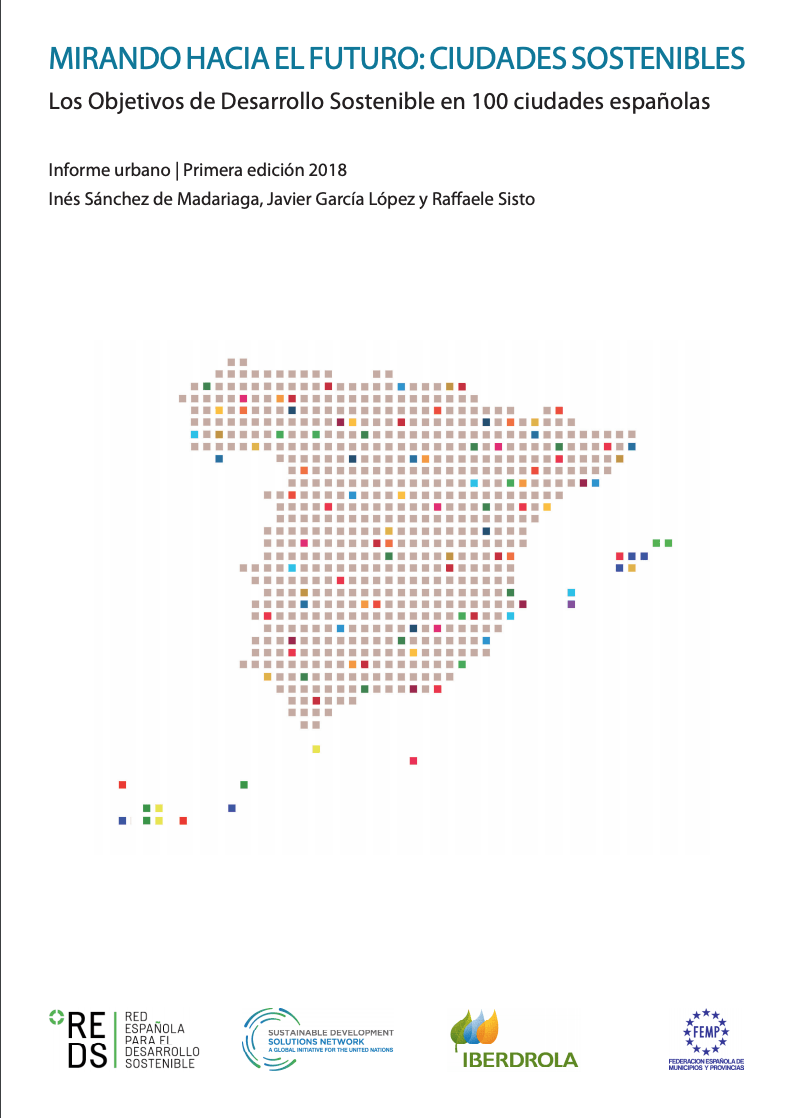
By jay
•
02 Dec, 2019
Report: The SDGs in 100 Spanish cities.
First edition of the study promoted by REDS to measure the degree of fulfillment of the 17 Sustainable Development Goals in the Spanish municipalities. It includes a proposal for a set of common urban indicators to measure the SDGs at the local level.

By jay
•
08 Jul, 2019
The 2019 US Cities Sustainable Development Report is SDSN’s third city-level report ranking 105 US cities on progress towards the UN’s Sustainable Development Goals for 2030 (SDGs). The results show that there will be significant work to do across the board if the SDGs are to be achieved by 2030, as cities on average scored only 48.9%.
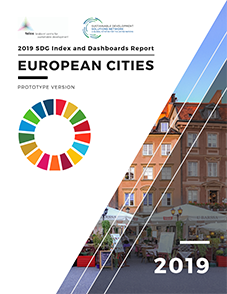
By jay
•
22 May, 2019
This 2019 SDG Index and Dashboards Report for European Cities (prototype version) provides an overview of the performance of 45 capital cities and large metropolitan areas on the Agenda 2030 and 17 Sustainable Development Goals (SDGs) adopted by global leaders in September 2015 at the UN Sustainable Development Summit. It builds on previous work conducted by SDSN to monitor the SDGs at national and subnational levels and on TELOS’ scoping study “Sustainability Monitoring of European Cities” prepared in collaboration with the European Commission’s Directorate-General for Environment.

By jay
•
01 Mar, 2019
Since 2015, cities across the United States have begun incorporating the SDGs to reinforce their existing sustainability plans and to provide a common language to discuss goals among peer cities. Since then, SDSN has proudly been a partner to the cities at the forefront of this movement through the USA Sustainable Cities Initiative, partnering with key stakeholders in cities such as Baltimore, San Jose, New York and Los Angeles. The ranks of cities who have understood the benefits of the SDG framework have continued to grow. In January 2019, SDSN hosted a workshop alongside the 2019 Winter Meeting of the US Conference of Mayors with practitioners and experts to discuss their experiences and consider lessons detailed in the draft practitioner guide: “A Pathway to Sustainable American Cities: A Guide to Implementing the Sustainable Development Goals.” This guide, a re-imagining of a 2016 guide prepared for a global urban audience, presents 10 steps for cities to consider on their way to adapting and adopting the global framework for their own city. Executive Summary Mayors, city council members, and all who work in city government know that success for a city is nonpartisan. The to-do list is a long one: promote economic development and opportunity, foster security and safety, provide clean drinking water and air, support quality schools, ease transportation and mobility, provide access to health care, promote civic engagement and community, ensure adequate housing, and respond to emergencies and severe weather events (to name a few). This guide encourages cities to take a holistic approach to tackling these challenges, developing an innovative, long-term vision for their cities to thrive and drawing on the experiences of others to guide the way. Over the last 15 years, U.S. cities of all sizes have started developing long-term sustainability plans that identify demographic trends, anticipate their cities’ needs, and set long-term environmental goals. The planning process also often includes a range of input from city residents and other stakeholders, such as civic institutions and the private sector. In addition, the plans are updated regularly and progress is tracked publicly. At the international level, 193 United Nations countries adopted the Sustainable Development Goals (SDGs) in 2015 after a rigorous process that incorporated expert analyses, as well as input from many levels of civic organizations. The 17 SDGs combine economic development plus social, environmental, and good governance goals, recognizing that the goals complement and support one another and are interdependent. As it turns out, the SDGs and the goals that U.S. cities have been striving toward have a lot in common. They are both widely recognized as a solid foundation for a visionary and achievable framework. Bringing in the SDGs can complement and strengthen traditional sustainability plans by shedding light on how environmental challenges and goals are interwoven with the social and economic conditions of a city and how setting goals and targets in one area may benefit other areas, as well as serve more city residents. Furthermore, adopting the SDGs can help to amplify existing goals and platforms for discussion and development with city residents, state and national government agencies, and across city networks globally. While the SDGs will not all apply in the same way for all cities, they can be prioritized and customized to meet the conditions and requirements for any city. With this guide, cities can take advantage of the SDG framework and other cities’ experiences, saving valuable time and resources in setting goals and strategies while not reinventing the wheel. This guide also provides case studies and examples from U.S. cities that have begun to use the SDGs to fortify their own planning by adapting them to the local context. Cities such as Los Angeles, New York, Orlando, and San José are leading the way, showing the utility of the SDG framework to broaden their ambition and bolster their existing plans and strategies. Following the ten tested steps within this guide can help make such planning exercises a success. These steps are based upon lessons from recent planning exercises in New York, San José, and other cities, as well as the extensive experience of the authors, who have collectively been involved in urban sustainability planning for more than 30 years. The SDG framework may help cities identify priorities and set long-term goals. The goals are designed to reveal the interdependent systems at play in sustainable development, such as how the use of fossil fuels affects not only climate change but also air quality and public health, and thus poverty rates and economic opportunities. By following these ten steps, cities can harmonize common goals across agencies. Added benefits include finding gaps, infusing priorities into a budget process, cutting programming redundancies and saving resources, and tracking outcomes. Cities can also engage across an expanding network of other governments and institutions that are pursuing the same goals for ideas and expertise. If integrated and managed well, the SDGs can help to strengthen local communities with their values of transparency, inclusion, and engagement. No need to reinvent the wheel, no need to add another layer—this guide shows how to fast-track the process from beginning to end. Through the SDGs, cities can improve their quality of life on a local level while leading the world on the environment, the economy, and social issues.
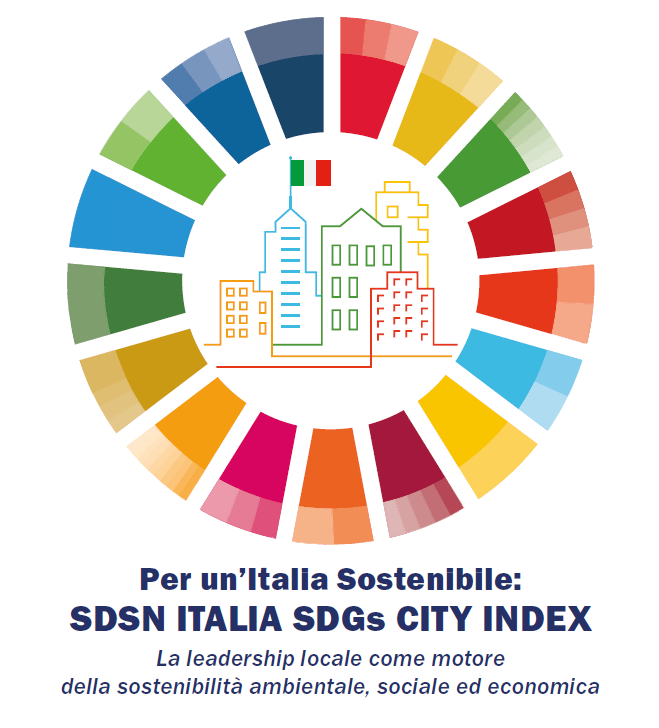
By jay
•
29 Nov, 2018
The report highlights the degree of SDG implementation in Italian municipalities and features select indicators specific to the Italian context which can be used to monitor and measure SDG progress at the sub-national over time. The ultimate aim of the report is to help guide policy-making decisions at the municipality level to enable further alignment with Agenda 2030. It examines 101 provincial capitals on 16 of the 17 SDGs, using 39 elementary statistical indicators. SDSN Italia’s SDGs City Index shows that – by setting 100% the full achievement of the international targets of the SDGs – on average, Italian cities have reached 53%. The report highlights that of the 101 cities analyzed, none has reached more than 80% of overall achievement of the SDGs.
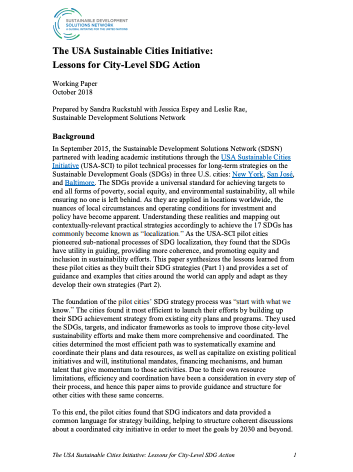
By jay
•
10 Oct, 2018
In September 2015, the Sustainable Development Solutions Network (SDSN) partnered with leading academic institutions through the USA Sustainable Cities Initiative (USA-SCI) to pilot technical processes for long-term strategies on the Sustainable Development Goals (SDGs) in three U.S. cities: New York , San José , and Baltimore . The SDGs provide a universal standard for achieving targets to end all forms of poverty, social equity, and environmental sustainability, all while ensuring no one is left behind. As they are applied in locations worldwide, the nuances of local circumstances and operating conditions for investment and policy have become apparent. Understanding these realities and mapping out contextually-relevant practical strategies accordingly to achieve the 17 SDGs has commonly become known as “localization.” As the USA-SCI pilot cities pioneered sub-national processes of SDG localization, they found that the SDGs have utility in guiding, providing more coherence, and promoting equity and inclusion in sustainability efforts. This paper synthesizes the lessons learned from these pilot cities as they built their SDG strategies (Part 1) and provides a set of guidance and examples that cities around the world can apply and adapt as they develop their own strategies (Part 2).

By jay
•
08 Jun, 2018
This 2nd annual report from the Sustainable Development Solutions Network (SDSN) ranks the 100 most populous metropolitan areas in the U.S. on the Sustainable Development Goals (SDGs). It is particularly relevant for urban leaders whose engagement is crucial for sustainable development, as 85% of the U.S. population live in cities.
SIGN UP FOR SDSN UPDATES
Get our latest insights, opportunities to engage with our networks, and more.
SDSN mobilizes global scientific and technological exertise to promote practical solutions for sustainable development, including the implementation of the Sustainable Development Goals (SGDs) and the Paris Climate Agreement.
Paris
19 rue Bergère
75009 Paris
France
+33 (0) 1 84 86 06 60
New York
475 Riverside Drive
Suite 530
New York NY 10115 USA
+1 (212) 870-3920
Kuala Lumpur
Sunway University
Sunway City Kuala Lumpur
5 Jalan Universiti
Selangor 47500
Malaysia
+60 (3) 7491-8622
Designed by
Northeast Kingdom Online. Powered by
NEKO|360.

